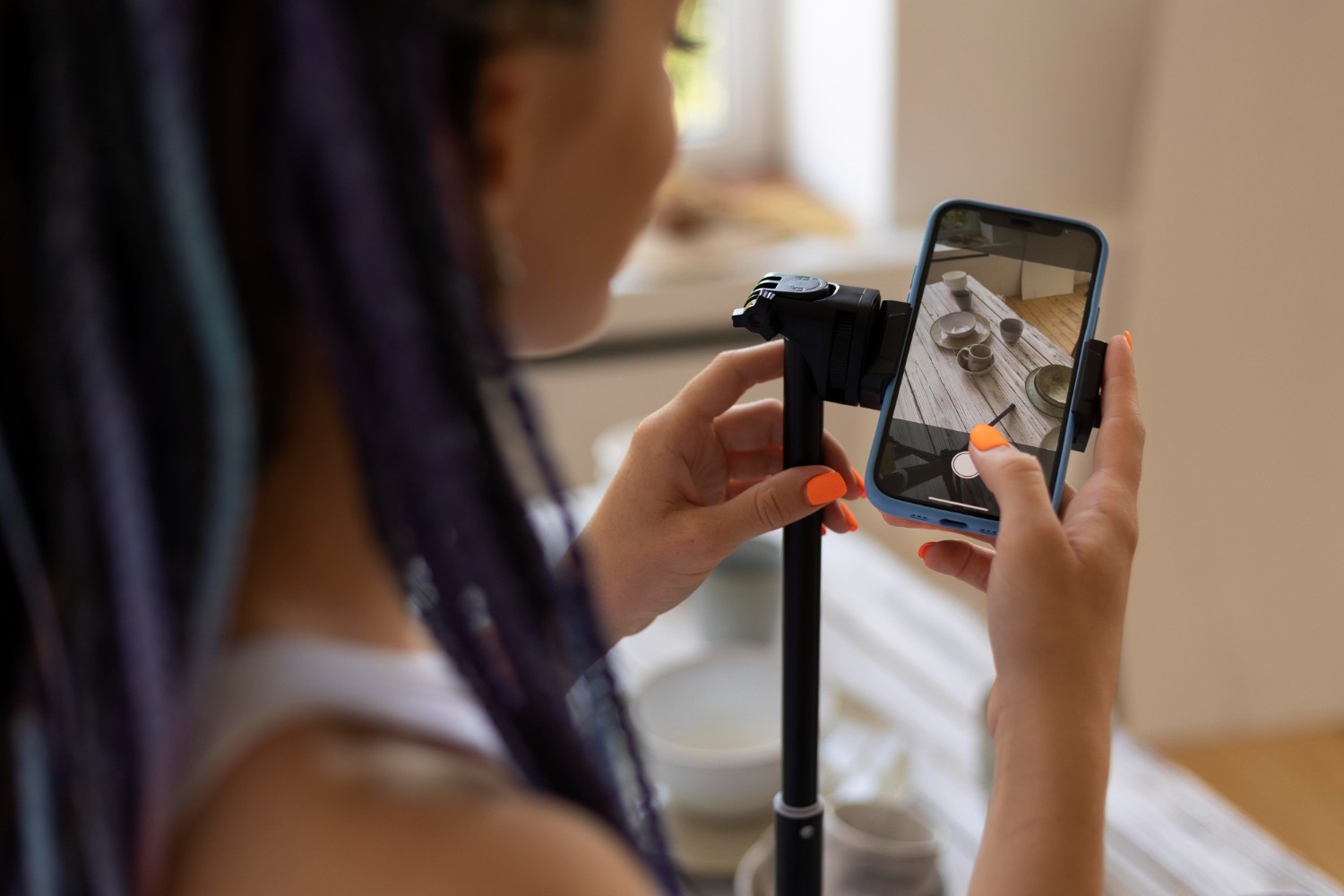
Remember when holding your phone sideways to watch a video was the norm? Those days are officially behind us. The digital landscape has flipped literally, and vertical video advertising is now leading the charge in what we're calling the mobile-first creative revolution.
As consumer behavior continues to shift toward mobile-first consumption, brands and marketers are discovering that the old rules of video advertising simply don't apply anymore. At MediaNug, we've witnessed firsthand how this format transformation is reshaping the entire advertising ecosystem, and frankly, it's one of the most exciting developments we've seen in years.
The Numbers Don't Lie: Why Vertical Video Wins
Here's the reality check every marketer needs: mobile devices account for over 60% of all digital media consumption, and users hold their phones vertically 94% of the time. When you force viewers to rotate their devices to watch your horizontal content, you're already fighting an uphill battle.
Vertical videos receive 90% more engagement than their horizontal counterparts on mobile platforms. That's not a small improvement, that's a game-changer. Users are nine times more likely to watch a vertical video to completion simply because it fits naturally in their hands and doesn't disrupt their scrolling experience.
The beauty of vertical video advertising lies in its seamless integration with the user experience. When someone is scrolling through Instagram Stories, TikTok, or Snapchat, your vertical content becomes part of their natural flow rather than an interruption they need to accommodate.

Platform-Specific Requirements: One Size Doesn't Fit All
Each social media platform has evolved its own vertical video ecosystem, and understanding these nuances is crucial for any mobile first social media advertising agency worth its salt.
Instagram Stories and Reels thrive on 9:16 aspect ratio content that fills the entire screen. The platform rewards native vertical content with better organic reach and more prominent ad placement. Stories disappear after 24 hours, making them perfect for time-sensitive campaigns, while Reels offer longer-term visibility with discovery potential.
TikTok has essentially built its entire empire on vertical video content. The platform's algorithm heavily favors content that feels native to the mobile experience. TikTok users expect quick, engaging, and authentically vertical content that doesn't feel like repurposed horizontal footage.
Snapchat pioneered the vertical video format for social media, and it remains one of the most effective platforms for reaching younger demographics with mobile-optimized social media videos. The platform's AR capabilities add another layer of engagement opportunity for vertical content.
YouTube Shorts entered the vertical video space as a direct response to TikTok's success. While YouTube traditionally favored horizontal content, Shorts represents the platform's acknowledgment that mobile-first, vertical content is the future of video consumption.
Creative Best Practices: Thinking Vertically from Day One
Creating effective vertical video advertising requires a fundamental shift in creative thinking. This isn't about cropping horizontal videos, it's about reimagining how stories are told within the vertical canvas.
- Hook Them in the First Three Seconds: Mobile users have notoriously short attention spans, especially when scrolling through feeds. Your opening moments need to be immediately compelling. Use bold visuals, intriguing questions, or surprising statistics that make users pause their scroll. Remember, you're competing with endless content, so your hook needs to be sharp.
- Embrace the Full Screen Real Estate: Vertical video gives you more space to work with than you might initially think. Use text overlays strategically, but don't overcrowd the screen. The goal is to guide the viewer's eye naturally from top to bottom, creating a visual hierarchy that supports your message.
- Keep Text Large and Readable: Mobile screens are small, and users often watch videos without sound. Your text needs to be large enough to read comfortably on a smartphone screen. Stick to bold, high-contrast fonts that pop against your background. If users can't read your message easily, they'll keep scrolling.
- Design for Sound-Off Viewing: Studies show that 85% of mobile video content is consumed without sound. Your vertical video advertising creative needs to tell a complete story visually. Use captions, visual cues, and compelling imagery that conveys your message even in silent mode.
The Mobile First Advertising Creative Strategy Approach
Developing a mobile first advertising creative strategy means putting mobile users at the center of every creative decision. This approach goes beyond simply creating mobile-friendly content, it means designing experiences that feel native to mobile consumption patterns.
Start by understanding how your audience interacts with their mobile devices. Are they multitasking while watching? Are they in public spaces where sound might be an issue? Are they looking for quick entertainment or detailed information? These behavioral insights should drive every creative choice you make.
Consider the context of mobile consumption. Users might be watching your content during a commute, in a waiting room, or while taking a break at work. Your vertical video advertising needs to respect these moments and provide value within the constraints of mobile viewing situations.
Storytelling in the Vertical Format: Vertical video storytelling requires a different narrative structure. Traditional horizontal video often uses wide shots to establish context, but vertical video excels at intimate, close-up storytelling. Focus on faces, emotions, and details that create an immediate connection with viewers.
Think about layering information vertically rather than horizontally. Your most important message should be in the center of the frame where users naturally focus, with supporting elements above and below.
The Technical Side: Optimization Essentials
Creating high-performing mobile-optimized social media videos requires attention to technical details that can make or break your campaign performance.
- Resolution and Quality: Aim for 1080x1920 pixels for most platforms, ensuring your content looks crisp on high-resolution mobile screens. However, don't sacrifice loading speed for ultra-high resolution. Mobile users will abandon slow-loading content faster than you can say "buffering."
- File Size Management: Mobile data usage is always a consideration for users. Optimize your video files to balance quality with reasonable file sizes. Compressed videos that load quickly often outperform higher-quality videos that take too long to start playing.
- Loading Speed Optimization: The first few seconds of loading time can determine whether a user engages with your content or scrolls past it. Test your videos across different connection speeds and devices to ensure consistent performance.
Measuring Success in the Vertical Video World
Traditional video metrics don't always apply to vertical video advertising. Engagement rates, completion rates, and interaction patterns differ significantly from horizontal content, requiring adjusted expectations and measurement approaches.
Focus on platform-specific metrics that matter for mobile consumption. Completion rates tend to be higher for vertical videos, but attention patterns might be different. Users might rewatch vertical content more frequently but spend less time per view.
Track how users interact with your vertical content across different devices and platforms. The same vertical video might perform differently on Instagram versus TikTok, and understanding these nuances helps refine your mobile-first advertising creative strategy.
The Future is Vertical
The shift toward vertical video advertising isn't a temporary trend, it's a fundamental change in how people consume content. As 5G networks expand and mobile devices become even more integral to daily life, vertical video will only become more dominant.
Smart marketers are already adapting their creative processes to prioritize vertical-first thinking. This means concepting, filming, and editing with vertical in mind from the beginning, rather than trying to adapt horizontal content after the fact.
At MediaNug, we've seen brands transform their engagement rates by embracing this mobile-first creative revolution. The companies that recognize vertical video advertising as an opportunity rather than a constraint are the ones setting themselves up for sustained success in the mobile-dominated future.
The mobile-first creative revolution is here, and vertical video advertising is leading the charge. The question isn't whether you should adapt, it's how quickly you can embrace this new creative landscape and make it work for your brand.
Ready to flip your advertising strategy? The vertical future is waiting.






